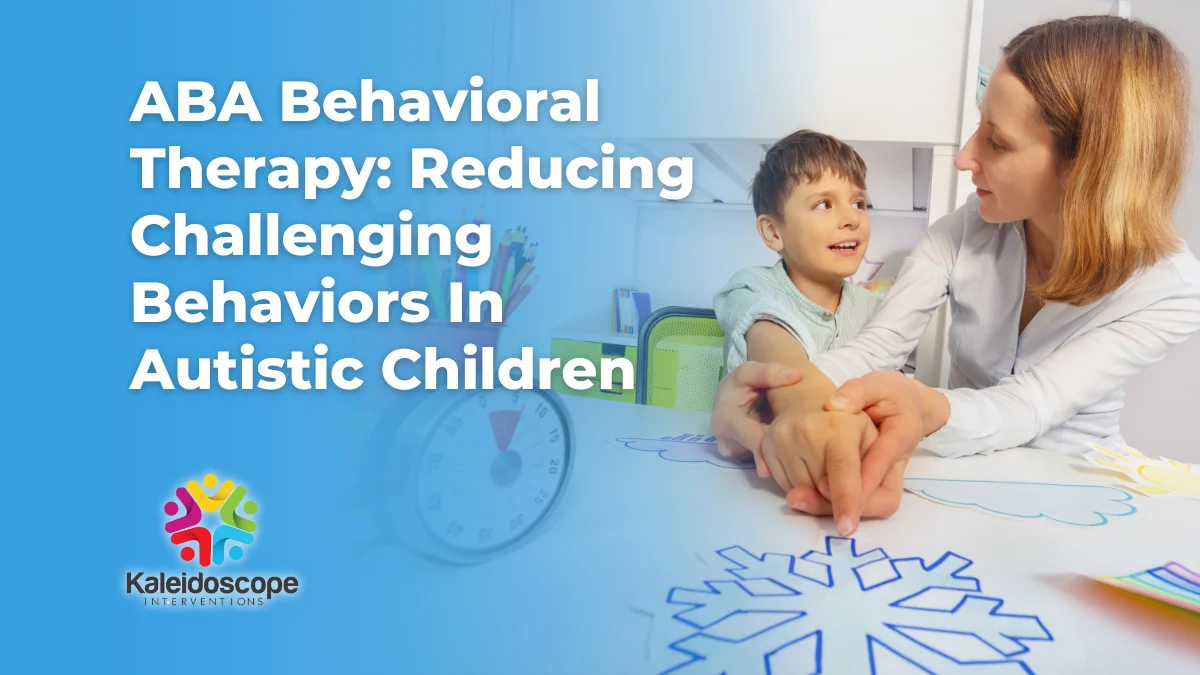With more and more individuals entering the workforce with education and degrees in Applied Behavioral Analysis (ABA), there are growing opportunities to utilize this experience in unique and challenging ways. Though commonly prescribed as a form of therapeutic treatment for those diagnosed with Autism Spectrum Disorder, ABA methodologies can benefit students of all ages and areas of focus. Behavioral modification often conjures up images of force, but techniques can be used to break habits, read social situations, and understand nuances and changes in culture.
Currently, ABA therapy is almost exclusively available as a separate form of learning therapy, much like speech therapy or physical therapy. However, as society progresses to a more inclusive, understanding state, it might behoove us to consider the place of ABA in mainstream public education.
Whether the classroom involves one or more teachers, the manner of the classroom is changing. According to the National Institute of Health, 25.1% of students between the ages of 13 and 18 are diagnosed with an anxiety disorder and up to 15% meet varying qualifications for a learning disability. These diagnoses alone don’t always guarantee a child will qualify for full or partial special education services, and these numbers don’t include students who haven’t been tested, much less diagnosed. And yet still, most teacher training programs provide little to no training on behavioral or mental health. The use of ABA is structured to the patient individually, which means training allows a childcare professional to address the varying needs of students with any number of personal difficulties alongside mainstream and/or typically developing students.
One of the primary texts on ABA is known as “The White Book” or more plainly, Applied Behavioral Analysis by John O. Cooper. The full text is lengthy and technical, but in a short overview on “ABA in Education” from 1982, Cooper states that only the terminology, not the methodology of ABA is new to teachers in the classroom. When presented with explanations and examples, it’s common that the teachers had picked up some variation of behavioral modification through “trial and error experiences, through verbal reports of master teachers, or through direct observations of other teachers.” The same could undoubtedly be true today.
What would the effect be of providing a lead teacher with an RBT or BCaBA assistant or co-teacher available full time in the classroom? The lead teacher could be left to instruct on the subject(s) while the ABA trained professional could be available for individual study, group or class wide reinforcement systems, and data tracking and analysis. ABA techniques are as useful in course-based education as it is in behavior management. The professionals at AppliedBehaviorAnalysis.edu claim, “the field of applied behavior analysis has had considerable influence on the general education system as well and continues to find applications in regular classrooms.” Mainstream classrooms often use consistent quizzing to reinforce learning, rewards for achievements, and instituting raising hands before asking questions or requesting a hall pass before leaving for the bathroom, which are examples of “a type of shaping that inculcates consistent and respectful behavior in the class environment.”
One of the most vital reasons for ABA trained professionals in the classroom is reflected in one of the seven core concepts of ABA: Generalization. Jonathan Tarbox, Ph.D., BCBA-D from the University of Southern California led a talk for the CARD Distinguished Lecturer Series where he states that “It is nothing less than the goal of behavior change … If a child is not affected in a positive way across most or all his/her life, then the change is not very meaningful.” For children with higher needs, the routine becomes a vital requirement. A child being potty trained only at home is not guaranteed to pick up toileting at school if the teaching methods do not plan for generalization to other settings. Similarly, students working on reducing challenging behavior, such as self-injurious or aggressive behavior will have a much harder time internalizing the information if it’s only presented during 2-3-hour therapy sessions a few times a week.
Schools like Puzzle Box Academy and the corresponding therapy center, Kaleidoscope Interventions, were created with the aim of combining standard mainstream education with the individualized focus of ABA. With a year-round program and ample opportunities for tutoring, therapy, and after-school activities, the school offers trained professionals in every classroom. Complementing ABA concepts, Puzzle Box is a trained replication site of the extensive Morningside Academy Model of Generative Instruction. The methodology “combines well-designed instructional materials, fast-paced classroom presentation, and focused practice to fluency. The results are expert and confident learners who apply skills and strategies to think about the world around them, continue to learn on their own, and solve problems of daily living.” Students are evaluated and instructed on an individual basis to provide the best in education, life skills, and career training available for students with Autism Spectrum Disorder or other disabilities.
With the fast pace of society today, it’s easy to allow the status quo to remain intact – school systems have worked well enough this long, so many aren’t inclined to make changes. However, the bar is being set by schools like Puzzle Box Academy to provide enhanced, excellent education to students in a way that is challenging more than the status quo: it’s challenging the very core of education itself!

